Last Updated on August 2, 2021

Welcome to The Best Movie You NEVER Saw, a column dedicated to examining films that have flown under the radar or gained traction throughout the years, earning them a place as a cult classic or underrated gem that was either before it’s time or has aged like a fine wine.
This week we’ll be examining Kathryn Bigelow’s STRANGE DAYS, written by James Cameron and Jay Cocks.

THE STORY:
A former cop turned street-hustler accidentally uncovers a police conspiracy in 1999 Los Angeles.
THE PLAYERS:
Director Kathryn Bigelow, worked from a script by former spouse James Cameron and screenwriter Jay Cocks for STRANGE DAYS, adding an impressive cast to the pic, including Ralph Fiennes, Angela Bassett, Juliette Lewis, Vincent D’Onofrio, Tom Sizemore, William Fichtner, Glenn Plummer, and Michael Wincott.

THE HISTORY:
James Cameron conceived of STRANGE DAYS just after his success with 1984’s THE TERMINATOR, writing a five-page story called “The Magic Man” that attempted to tackle the noir genre with a high tech upgrade. It languished for years until he pitched the concept to Bigelow (fresh off POINT BREAK), who agreed to shoot it, while waiting for Cameron to shape it into a script. Then, in 1993, Cameron emerged with a 131 page scriptment for the film, which he turned over to Jay Cocks to make it “shoot ready”
“Between Jay and Kathryn, ideas flew like crazy — visualize whirled peas. Their restructuring of my unweidly piece was efficient and focused, while retaining the style of the meandering, quirky dialogue. They wrote it down to a manageable length and shaped it into Kathryn’s vision. Though Jay and I did very little writing together, we are both proud of the collaboration.” – James Cameron
Because of the intricate POV sequences in the film, Bigelow needed a camera that could capture the footage without making audiences barf. A year before filming was to begin, she had a new camera built that “weighed 8 pounds, it was 35 millimeter, with interchangable lenses — prime lenses — and outfitted it with a kind of modified Steadicam rig, which enabled you to give you the kind of fluidity of Steadicam.”
Filming took place in 1994, shooting 77 days of night photography of the 80-day shoot. The biggest part of the shoot was the New Year’s Eve party, which took place in downtown L.A. The production hired Concert promoters Moss Jacobs and Philip Blaine to help create the massive event, which attracted more than 10,000 “extras” and featured performances by Dee-Lite and Aphex Twin and many more techno groups.
The film debuted on October 6, 1995 and pulled in a paltry $7.9 million domestic take from a $42 million budget. It had mostly favorable reviews, although wasn’t universally loved. It fell quickly into obscurity, even with its Saturn Award wins, but has since become a staple in the sci-fi noir genre, helped even more by Bigelow’s career trajectory with hits like THE HURT LOCKER and ZERO DARK THIRTY.

WHY IT’S GREAT:
STRANGE DAYS is a “futuristic” noir tale that’s caught up with its future, like many before it. At the time of its release it was only five years away from the projected timeframe, so it was inevitable. What’s fun about films that predict a possible near future is the compare and contrast that comes with watching it afterward. How much did they get right or wrong? How close did they get to the truth? With STRANGE DAYS it’s a mixed bag, but not an entirely incorrect one.
With a multitude of themes, from the crumbling of society to the perversion of technology to unrequited love, STRANGE DAYS tackles a lot, all wrapped up in a sci-fi murder/mystery/conspiracy thriller. That’s a lot to toss in, but with screenwriters James Cameron and Jay Cocks, it’s not an unattainable feat. While the plot thickens and twists throughout the running time it never becomes so convoluted that you can no longer follow it without having to hit the rewind button (but, it does come close). Director Kathryn Bigelow, long before she was an Oscar winner (although she did win a best director Saturn award for STRANGE DAYS), had directed mostly high-energy action thrillers like POINT BREAK and NEAR DARK up to the point of tackling her ex-husband’s (She and Cameron were married from 1989 – 1991) story about an ex-cop peddling bootleg “experiences” on a high-tech brain recording device who gets embroiled in a murder cover-up that goes all the way up the food chain.
Lenny Nero, played by a youthful Ralph Fiennes (in his first U.S. film) is a terrific everyman hero; a sleazy dealer obsessed with his ex-girlfriend (Lewis), now a musician in a relationship with an equally sleazy producer (Wincott), but who somehow manages to charm everyone enough to believe that there’s still something sincere and salvageable left in his soul. He’s not a bad ass or a genius; he’s a survivor and he uses his peddling skills and charming wit to make it through the day. Fiennes captures the pain and intensity of Nero perfectly and you want to believe that he will overcome the odds, rather than get what he deserves. It’s a protagonist that often goes missing in thrillers like this, as we’re typically given the MacGuyver jack of all awesomeness who we know can never fail.
Equally, Angela Bassett (who also won a Saturn Award for her performance) gives a tremendous performance as a “defensive” limo driver who befriended Nero during his police days. They share a strange bond that walks the tightrope of friends on the cusp of plunging into something more, but are held back by their personal demons. As Mace, Bassett is strong, vulnerable, and stunning, rocking her fit-as-a-fiddle body earned while making the Tina Turner biopic WHAT’S LOVE GOT TO DO WITH IT. She never gets trapped in the stoic role, breaking free with the pain and fear that encloses her when the plot draws her deeper into Nero’s mess.
“The toughest decision was not wanting to shy away from anything, trying to keep the truth of the moment, of the social environment. It’s not that I condone violence. I don’t. It’s an indictment. I would say the film is cautionary, a wake-up call, and that I think is always valuable.” – Kathryn Bigelow
After the murder of a famed rapper (Plummer), the already turbulent “1999” of the future is about to boil over, although what we see of that is mostly people running in the fiery streets of L.A. while tussling with cops in tanks. It’s never really explained what the big issue of the “future” is, but rather assumed that we just accept that “shit’s f*cked up.” The new drug of choice, however, comes from a SQUID (Superconducting Quantum Interference Device), which sits on top of one’s head and captures experiences directly from the cerebral cortex onto a recording device (in essence capturing a first-person experience), which is the critical centerpiece that drives the film’s plot forward.

There are a number of POV sequences in the film, which may seem like nothing special today, but in 1995 there weren’t hand-held mini cameras to capture that kind of footage, making it innovative for that time period. And, in many ways, it’s a parallel to what society has become in the Internet age, where social media and YouTube videos have become our real drug of choice, recording the best and worst of humanity and putting it on display in every digital venue available. In that, STRANGE DAYS is a unique predictor of our present state.
“We didn’t want to do tech and glitz. We wanted to do street. And we wanted to give a very vivid sense of a city in terminal social disorder. And a society really on the razor’s edge. I came to this from more of a Raymond Chandler angle than a William Gibson angle.” – Jay Cocks (screenwriter)
The murder/mystery aspect of the film plays off many of the societal issues of that timeframe, most notably the Rodney King beating captured on video and the L.A. riots that followed. STRANGE DAYS pulls from that event and creates a conspiracy tale that becomes a mild-mannered (by today’s standards anyway) morality tale, but never at the expense of the characters. It’s one of the few films that works on two levels; plot and character. Sounds like a no-brainer, but how often do the two work hand-in-hand?

After the death of a witness, in a particularly violent and brutal POV rape sequence, Nero and Mace go into high gear to find the truth about what’s going on, running into a pair of vicious cops, played by the always reliable Vincent D’Onofrio and a young William Fichtner. Both are cold, ruthless killers and their involvement in the plot raises the stakes even higher. Toss in Nero’s best friend, played by a long-haired Tom Sizemore as a private detective, the plot drives with urgency, never settling down too much to get monotonous, but never going so fast that you can’t follow what’s going on. It’s a deftly edited affair, thanks to Howard Smith and Cameron, who was uncredited for his role in chopping the film.
STRANGE DAYS isn't perfect and won’t suit all tastes, but it’s unique enough that it stands out, even if just for its ambiguity. Bigelow takes some great risks in the film, especially with the POV sequences, which are compelling and innovative for the time, yet still resonate today. Now, they’re the norm, rather than the new. The movie is chock full of violent interludes and ripe with nudity (Lewis’ nipples should get second billing), and has some large-scale sets that must’ve been a nightmare to coordinate. For that alone, Bigelow earned her props, but ultimately for making a smart, engaging, and thrilling sci-fi pic that is arduous in ideas and executed with a sharp focus and strong characters. The payoff ranges from justice to social commentary to sentimentality, which is a sweeping range for a niche genre pic that has heartily earned a place in the halls of obscure classics.
“… I saw a way to draw one possible future, think about it and maybe derail it; imagine it and feel it as you watch. Is this the end of the world or the beginning of another one? That’s the core of STRANGE DAYS and what moved me –compelled me — to make it. Those themes, and these characters: a hustler with an undiscovered conscience and a guide through the underworld who has the strength, and the love, to survive. The interlocking story of Lenny and Mace becomes a parable in noirish disguise, a story about the pervasive need to watch, to see. It calibrates the fragile balance between viewer and viewed, screen and audience, spectacle as medium and subject. It puts us all in the picture.” – Kathryn Bigelow
MEMORABLE SCENE:
Aside from the ample nudity and violent throwdowns sprinkled throughout, I think the scene with the biggest impact is the final confrontation between Angela Bassett's Mace with the two psychotic cops in the middle of the New Year's Eve party. It's the final statement and ultimate finale of the film's main plot, which underlies the bigger social issue at hand; corruption and the power of what we see vs. what is actually true. Without spoiling the end result, this is a powerful moment, punctuated by the massive undertaking it was to film such an immense scene.
WATCH IT:
STRANGE DAYS is (sadly) only available on standard DVD. You can get it here! Hopefully, Fox will give this the proper blu-ray upgrade it deserves in the future.
PARTING SHOT:
“STRANGE DAYS does three things that will make it a cult film. It creates a convincing future landscape; it populates it with a hero who comes out of the noir tradition and is flawed and complex rather than simply heroic, and it provides a vocabulary … At the same time, depending more on mood and character than logic, the movie backs into an ending that is completely implausible.” – Roger Ebert


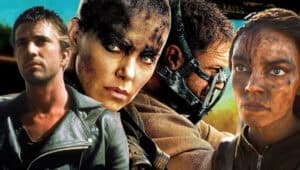

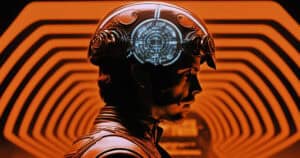
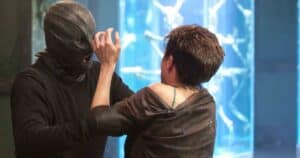
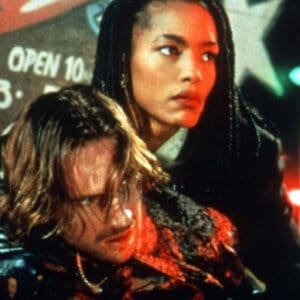
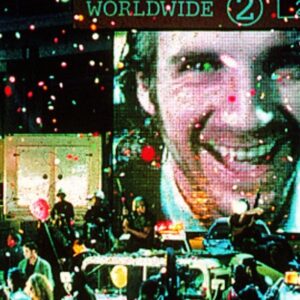
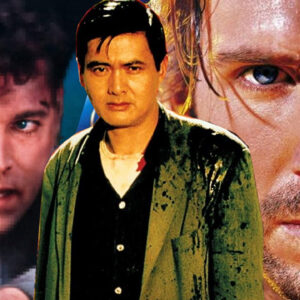

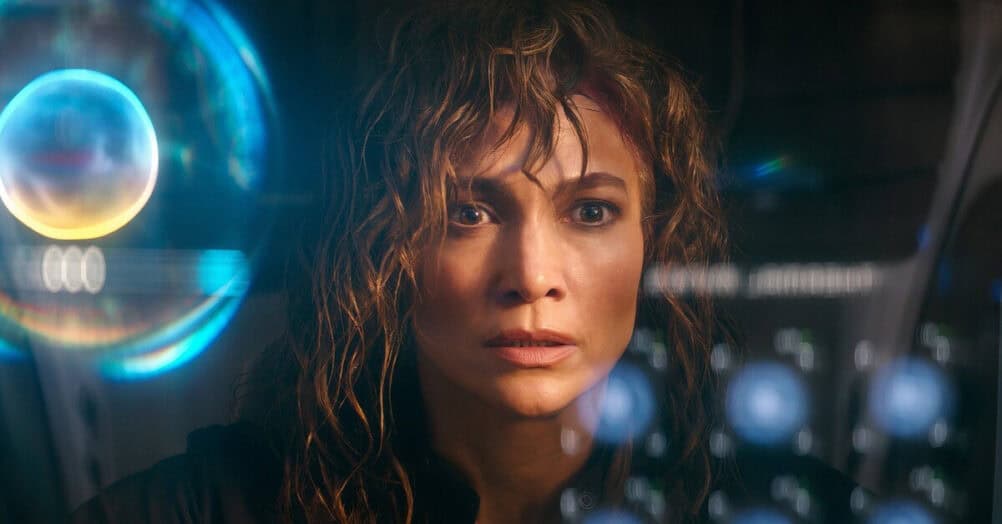
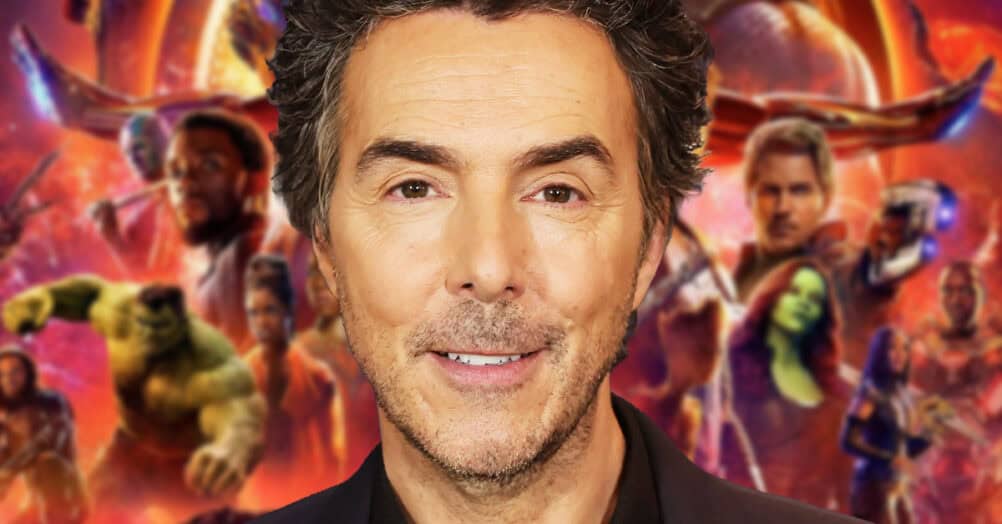
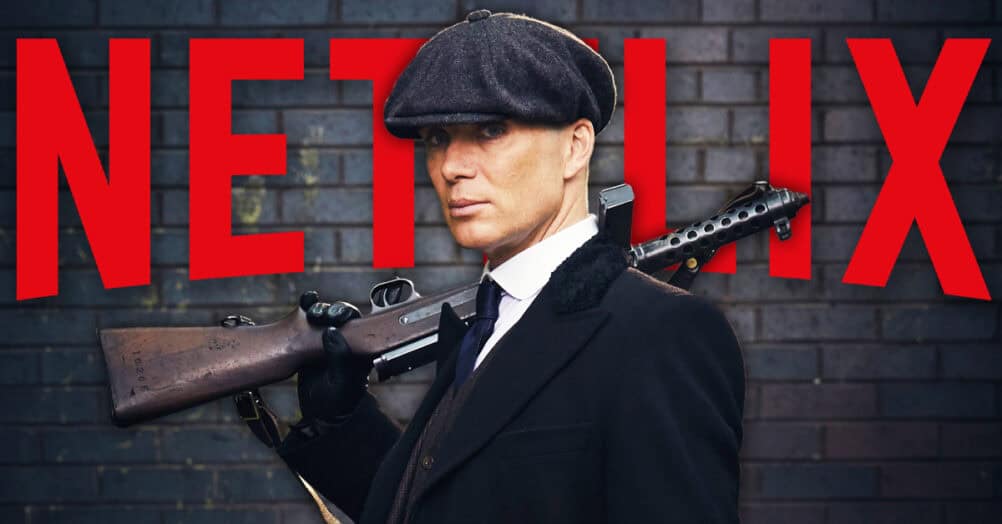

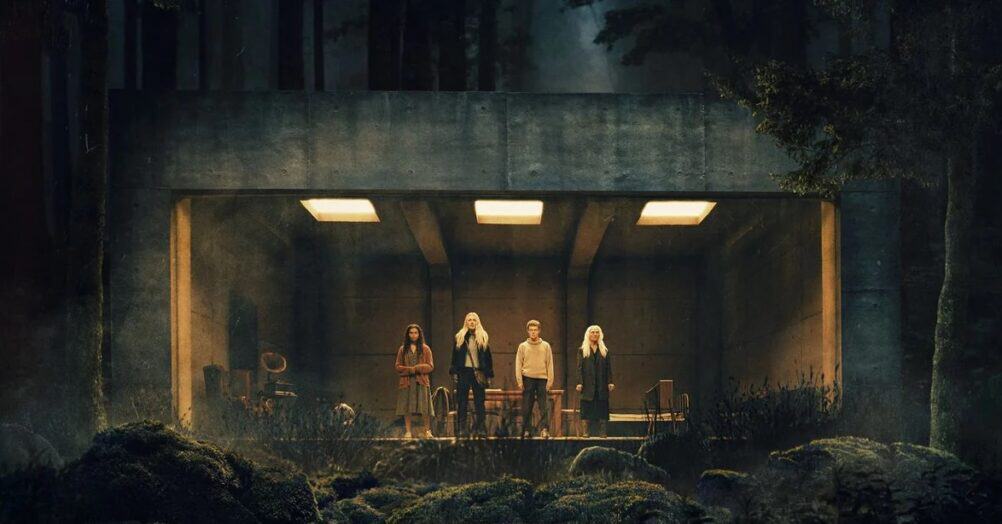
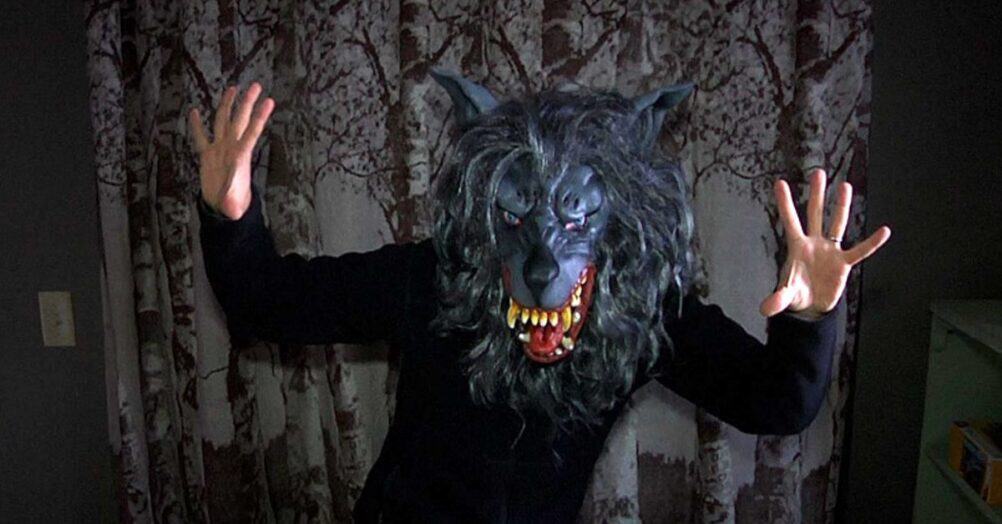



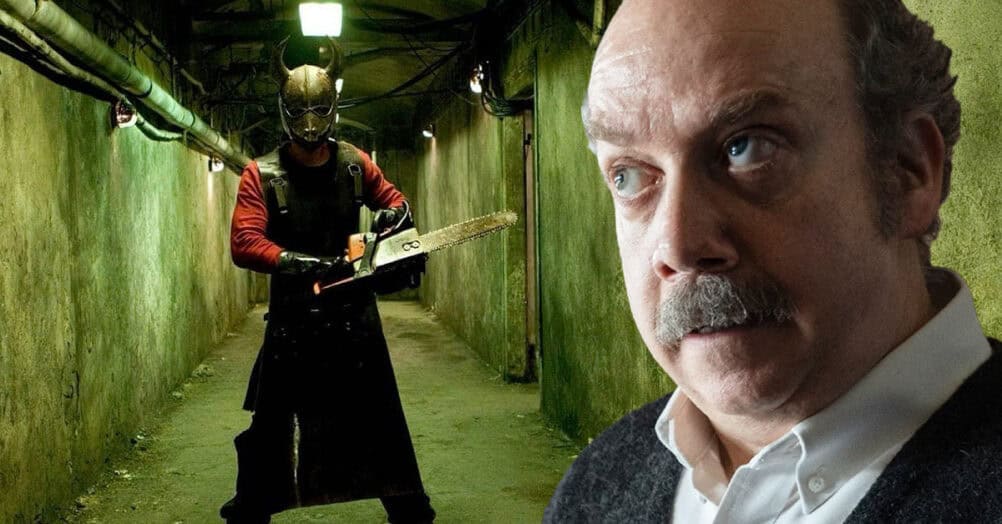
Follow the JOBLO MOVIE NETWORK
Follow us on YOUTUBE
Follow ARROW IN THE HEAD
Follow AITH on YOUTUBE